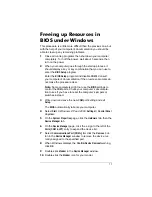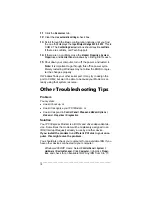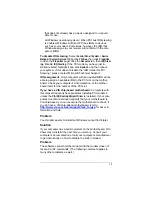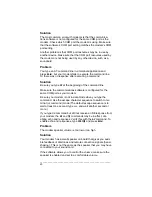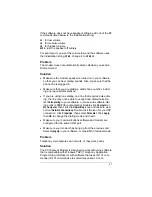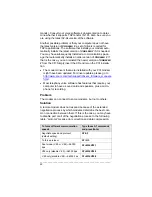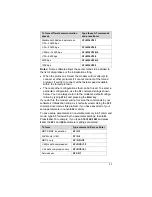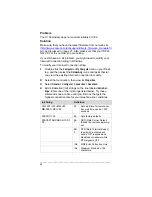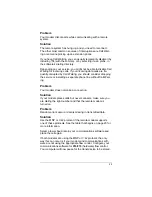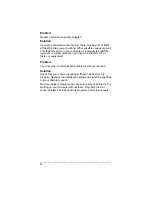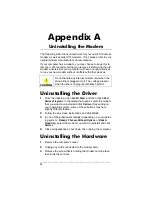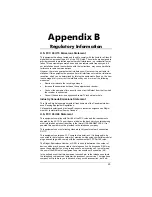
_________________________________________________________
14
•
If you are asked to select the
modem type
from a menu, and
you don’t see this modem listed by name, select the most
descriptive name such as
V.92 modem
,
56K modem
, or generic
Class 1 Modem
.
•
In the dialing directory,
set all entries to the highest possible
baud rate
, if your software and serial port support these
speeds (do not go over 115,200 bps). All communications
between the computer and the modem take place at this
higher speed, independent of the modem-to-modem speed.
•
If there is a section of your software called
Terminal Settings
,
make sure that
Hardware Flow Control (RTS/CTS)
is set to
ON
(or
YES
).
•
Set
auto baud detect
to
OFF
(or
NO
).
•
If your fax software gives you the option of selecting
Class 1
or
Class 2
fax drivers, select
Class 1
.
•
Finally, some programs ask
Send init if CD high?
, which you
should
set to
YES
. Otherwise, the modem might not receive
the proper initialization string.
Initialization Strings and AT
Commands
An initialization string is a group of
AT
command settings that is
sent to the modem as soon as you start up the software. The
software determines which commands should be included in the
initialization string, based on the device you select during instal-
lation. The commands remain in effect throughout the communi-
cations session, unless the software sends other commands to
override them.
The software uses other
AT
command strings for all commands
sent to the modem. This is transparent to you—the software
does this in the background without you being aware of it.
It is sometimes necessary, however, to add other
AT
commands
to initialization strings. You can find a table of
AT
commands on
the Web at
http://www.modems.com/glossary/glos10.html
.
If your software suggests an initialization string for this modem,
you should use it. If your software does not list this modem and
no initialization string is suggested, use the following:
AT &F
.

















